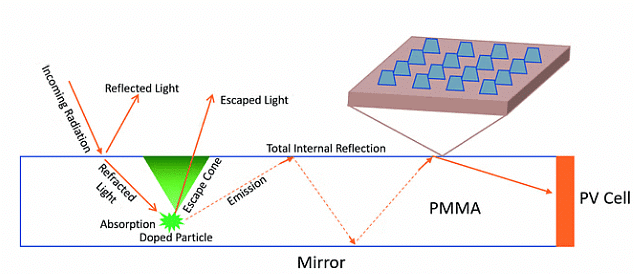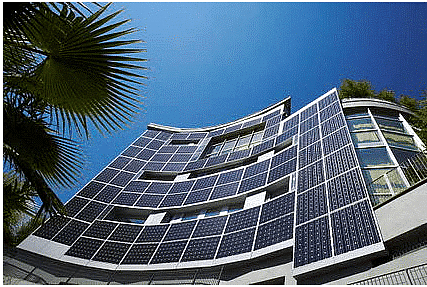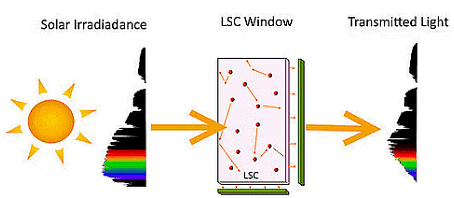Shankar IAS Summary: Renewable Energy | Famous Books for UPSC Exam (Summary & Tests) PDF Download
Renewable energy is energy that is generated from natural resources that are continuously replenished. This includes sunlight, geothermal heat, wind, tides, water, and various forms of biomass. This energy cannot be exhausted and is constantly renewed.
Types of Sources to Generate Energy
(i) Primary Source: Renewable energy like solar, wind, and geothermal.
(ii) Secondary Source: Non-renewable energy generated through the conversion of coal, oil, natural gas etc.
The Government has up-scaled the target of renewable energy capacity to 175 GW by the year 2022 which includes 100 GW from solar, 60 GW from wind, 10 GW from bio power and 5 GW from small hydropower.
1. Solar Energy
India is one of the few countries naturally blessed with long days and plenty of sunshine.
There are two ways we can produce electricity from the sunlight:
- Photovoltaic Electricity - Uses photovoltaic cells that absorb direct sunlight to generate electricity.
- Solar-Thermal Electricity - Uses a solar collector that has a mirrored surface that reflects the sunlight onto a receiver that heats a liquid. This heated-up liquid is used to make steam that produces electricity.
(i) Potential of solar energy in India
- India has the potential to generate 35 MW/km2 using solar photovoltaic and solar thermal energy.
- Solar energy of about 5,000 trillion kWh per year is incident over India’s land area with most parts receiving 4-7 kWh per sq. m per day. Hence both technology routes (solar thermal and solar photovoltaic) for conversion of solar radiation into heat and electricity can effectively be harnessed providing huge scalability for solar power in India.
(ii) Installed capacity - India
- The current installed capacity of solar in grid-connected power crossed 10,000 MW, as of 2017, as per MNRE estimates.
- One of the main features of the Mission is to make India a global leader in solar energy and the mission envisages an installed solar generation capacity of 100 GW (revised target) by 2022.
(iii) International Solar Alliance
- International Solar Alliance (ISA) was launched at the CoP21 Climate Conference in Paris on 30th November as a special platform for cooperation among 121 solar resource-rich countries lying fully or partially between the Tropic of Cancer and the Tropic of Capricorn.
- The alliance is dedicated to addressing the special energy needs of ISA member countries.
- International Agency for Solar Policy and Application (IASPA) will be the formal name of the International Solar Alliance. The ISA secretariat will be set up in the National Institute of Solar Energy, Gurgaon.
2. Luminescent Solar Concentrators
- A luminescent solar concentrator (LSC) is a device that uses a thin sheet of material to trap solar radiation over a large area, before directing the energy (through luminescent emission) to cells mounted on the thin edges of the material layer.
- The thin sheet of material typically consists of a polymer (such as polymethyl methacrylate (PMMA)), doped with luminescent species such as organic dyes, quantum dots or rare earth complexes.

A luminescent solar concentrator (LSC) is like a special sheet that can capture sunlight across a big surface. Instead of directly turning sunlight into electricity, it uses a thin sheet made of a special material, usually a type of plastic called polymethylmethacrylate (PMMA). This sheet is mixed with tiny particles that can glow when exposed to sunlight, like special dyes or tiny particles called quantum dots.
 Conventional cross-section of LSC
Conventional cross-section of LSC
This glowing sheet doesn't generate electricity itself. Instead, it guides the captured sunlight to the edges of the sheet, where solar cells are waiting to turn that light into electricity. So, it's like a way of concentrating and channeling sunlight to where it can be turned into power more efficiently.
What is the need for LSCs?
 Building-integrated photovoltaics (BIPV)
Building-integrated photovoltaics (BIPV)
- Luminescent Solar Concentrators (LSCs) are designed to replace expensive parts of standard solar panels with a more affordable alternative.
- The main goal is to reduce the cost of the solar panel module per unit of power produced, making solar energy more economical.
- LSCs can collect both direct sunlight and scattered light, making them effective even on cloudy days. This is an advantage over some other solar systems that rely mainly on direct sunlight.
- Unlike certain solar setups that need to track the sun's movement, LSCs don't require sun tracking systems.
- LSCs are well-suited for building-integrated photovoltaics (BIPV), meaning they can be integrated into structures like windows or walls.
- They are particularly useful in regions with cloudier climates, where they can still generate power effectively.
Ideal LSC
 Sunlight after passing through LSC
Sunlight after passing through LSC
- Catches a lot of sunlight: The material should be good at absorbing sunlight from all the different colors it comes in. Think of it like a sponge soaking up water, but in this case, it's sunlight.
- Shines all the captured light: Once it has soaked up sunlight, it should release it all as light. It's like squeezing that sponge to get all the water out.
- Big difference between taking in and giving out light: When it takes in sunlight, it should be different from when it gives out light. This helps in not losing too much sunlight during the process. Imagine if your sponge absorbed blue water and squeezed out yellow water – you'd know it did its job.
- Lasts a long time without problems: The material should keep doing this job well for a really long time without breaking or becoming less efficient. It's like having a reliable tool that works well for years.
3. Wind Energy
Wind energy is the kinetic energy associated with the movement of atmospheric air. Wind turbines transform the energy in the wind into mechanical power, further converting it to electric power to generate electricity. Five nations - Germany, USA, Denmark, Spain and India — account for 80% of the world's installed wind energy capacity.
(i) Wind farm
- A wind farm is a group of wind turbines in the same location used for the production of electricity. A wind farm can be located onshore and offshore.
(ii) Working of wind turbines
- Wind turbines convert the kinetic energy in the wind into mechanical energy. This mechanical power can be used for specific tasks (such as grinding grain or pumping water) or a generator can convert this mechanical power into electricity. Most turbines have three aerodynamically designed blades.
- The energy in the wind turns two or three propeller-like blades around a rotor that is connected to the main shaft, which spins a generator to create electricity. Wind turbines are mounted on a tower to capture the most energy. At 100 feet (30 meters) or more above ground, they can take advantage of faster and less turbulent wind.
(iii) Potential of wind energy in India
- The National Institute of Wind Energy (NIWE) has recently launched the Wind Energy Resource Map of India at 100 meters above ground level (AGL) on an online Geographic Information System platform.
- The wind energy potential in the country at 100 m AGL is over 302 GW. Gujarat has the maximum potential followed by Karnataka, Maharashtra, and Andra Pradesh according to the resource map.
- Wind energy target
- 60000 MW (60 GW) by 2022
- 200000 MW (200 GW) by 2022
4. Hydro Power
- Hydraulic power can be captured when water flows downward from a higher level to a lower level which is then used to turn the turbine, thereby converting the kinetic energy of water into mechanical energy to drive the generator.
- Hydropower is the cheapest, and cleanest source of energy but there are many environmental and social issues associated with big dams as seen in projects like Tehri, Narmada, etc. Small hydropower is free from these problems.
- Types of hydropower stations:
(i) Impoundment
(ii) Diversion
(iii) Pumped storage
Small Hydro Potential in India
- Ail estimated 5,415 sites of small hydro have been identified with a potential of around 19,750 MW.
- River-based projects in the Himalayan states and irrigation canals in other states have massive potential for the development of Small Hydro Projects.
- According to the Xllth five-year plan targets, capacity addition from Small Hydro Projects is targeted at 2.1 GW in the 2011-17 period.
- The Ministry of New and Renewable Energy is encouraging the development of Small Hydro Projects in both the public and private sectors and aims to exploit at least 50% of the current potential in the next 10 years.
5. Ocean Thermal Energy
- Large amounts of solar energy are stored in the oceans and seas. On average, the 60 million square kilometres of tropical seas absorb solar radiation equivalent to the heat content of 245 billion barrels of oil.
- The process of harnessing this energy is called OTEC (ocean thermal energy conversion). It uses the temperature differences between the surface of the ocean and the depths of about 1000m to operate a heat engine, which produces electric power.
6. Wave Energy
- Waves result from the interaction of the wind with the surface of the sea and represent a transfer of energy from the wind to the sea.
- The first wave energy, project with a capacity of 150MW, has been set up at Vizhinjam near Trivandrum.
7. Tidal Energy
- Energy can be extracted from tides by creating a reservoir or basin behind a barrage and then passing tidal waters through turbines in the barrage to generate electricity.
- A major tidal wave power project costing Rs.5000 crores, is proposed to be set up in the Hanthal Creek in the Gulf of Kutch in Gujarat.
8. Biomass
- Biomass is a renewable energy resource derived from the carbonaceous waste of various human and natural activities. It is derived from numerous sources, including the by-products from the timber industry, crops, grassy and woody plants, residues from agriculture or forestry, oil-rich algae, and the organic component of municipal and industrial wastes. Biomass is a good substitute for conventional fossil fuels for heating and energy generation purposes.
- Burning biomass releases about the same amount of carbon dioxide as burning fossil fuels. However, fossil fuels release carbon dioxide captured by photosynthesis over its formative years. Biomass, on the other hand, releases carbon dioxide that is largely balanced by the carbon dioxide captured in its growth (depending on how much energy was used to grow, harvest, and process the fuel). Hence, Biomass does not add carbon dioxide to the atmosphere as it absorbs the same amount of carbon in growing as it releases when consumed as a fuel.
9. Cogeneration
- Co-generation is producing two forms of energy from one fuel. One of the forms of energy must always be heat and the other may be electricity or mechanical energy. In a conventional power plant, fuel is burnt in a boiler to generate high-pressure steam. This steam is used to drive a turbine, which in turn drives an alternator through a steam turbine to produce electric power. The exhaust steam is generally condensed to water which goes back to the boiler.
- As the low-pressure steam has a large quantum of heat which is lost in the process of condensing, the efficiency of conventional power plants is only around 35%. In a cogeneration plant, the low-pressure exhaust steam coming out of the turbine is not condensed, but used for heating purposes.
Potential in India
- Biomass energy is one of the most important sources of energy forming 32% of the total primary energy usage in the country with more than 70% of the Indian population dependent on it for its energy needs.
(i) The current availability of biomass is estimated at 450-500 million tonnes annually translating to a potential of around 18000 MW. - In addition, about 5000 MW of additional power could be generated through bagasse-based cogeneration in the country’s 550 Sugar mills.
- It attracts over Rs 600 crore in investments annually creating rural employment of more than 10 million man days whilst generating more than 5000 million units of electricity.
10. Waste to Energy
- In today's era, there are increasing quantities of waste due to urbanization, industrialization and changes in life patterns which are harmful to the environment. In the recent past, the development of technology has helped to reduce the amount of waste for its safe disposal and to generate electricity from it.
- Waste-to-energy has the potential to divert waste from landfills and generate clean power without the emission of harmful greenhouse gases. This significantly reduces the volume of waste that needs to be disposed of and can generate power Pyrolysis and gasification are emerging technologies apart from the common incineration and biomethanation.
Potential of waste-to-energy
- There is an estimated potential of about 225 MW from all sewage and about 1460 MW from Municipal Solid Waste (MSW) in India totalling around 1700 MW of power.
- There is a current potential to recover 1,300 MW of power from industrial waste, which is projected to increase to 2,000 MW by 2017.
- The total installed capacity of grid interactive power from Waste to energy is 99.08 MW of grid power and about 115.07 MW of off-grid power.
- MNRE is actively promoting the generation of energy from waste by providing incentives and subsidies on projects.
11. Geothermal Energy
Geothermal generation refers to harnessing of the geothermal energy or the vast reservoir of heat stored in the earth's inner core. Below the earth’s crust, there is a layer of hot and molten rock called ‘magma’. Heat is continually produced there, mostly from the decay of naturally radioactive materials such as uranium and potassium.
(i) How is it captured
- Geothermal systems can be found in regions with a normal or slightly above normal geothermal gradient (gradual temperature change is known as the geothermal gradient, which expresses the increase in temperature with depth in the earth’s crust. The average geothermal gradient is about 2.5-3 °C/100 m.) especially in regions around plate margins where the geothermal gradients may be significantly higher than the average value.
- The most common current way of capturing the energy from geothermal sources is to tap into naturally occurring “hydrothermal convection” systems where cooler water seeps into the earth’s crust, is heated up and then rises to the surface. When heated water is forced to the surface, it is relatively easy to capture that steam and use it to drive electric generators.
(ii) Potential in India
India has the potential to produce around 10,600 MW of power from geothermal resources. Although India was among the earliest countries to begin geothermal projects since the 1970s, at present there are no operational geothermal plants in India. 340 hot springs were identified across India. These have been grouped and termed as different geothermal provinces based on their occurrence in specific geotectonic regions, geological and structural regions such as occurrence in orogenic belt regions, structural grabens, deep fault zones, active volcanic regions etc.
12. Fuel Cells
- Fuel cells are electrochemical devices that convert the chemical energy of a fuel directly and very efficiently into electricity (DC) and heat, thus doing away with combustion. The most suitable fuel for such cells is hydrogen or a mixture of compounds containing hydrogen.
- A fuel cell consists of an electrolyte sandwiched between two electrodes. Oxygen passes over one electrode and hydrogen over the other, and they react electrochemically to generate electricity, water, and heat.
|
1209 videos|2197 docs|849 tests
|
FAQs on Shankar IAS Summary: Renewable Energy - Famous Books for UPSC Exam (Summary & Tests)
| 1. What are some common sources of renewable energy? |  |
| 2. How does solar energy work as a source of renewable energy? |  |
| 3. What is the potential of wave energy as a renewable energy source? |  |
| 4. How does hydropower work as a renewable energy source? |  |
| 5. What are some advantages of using biomass as a renewable energy source? |  |






















